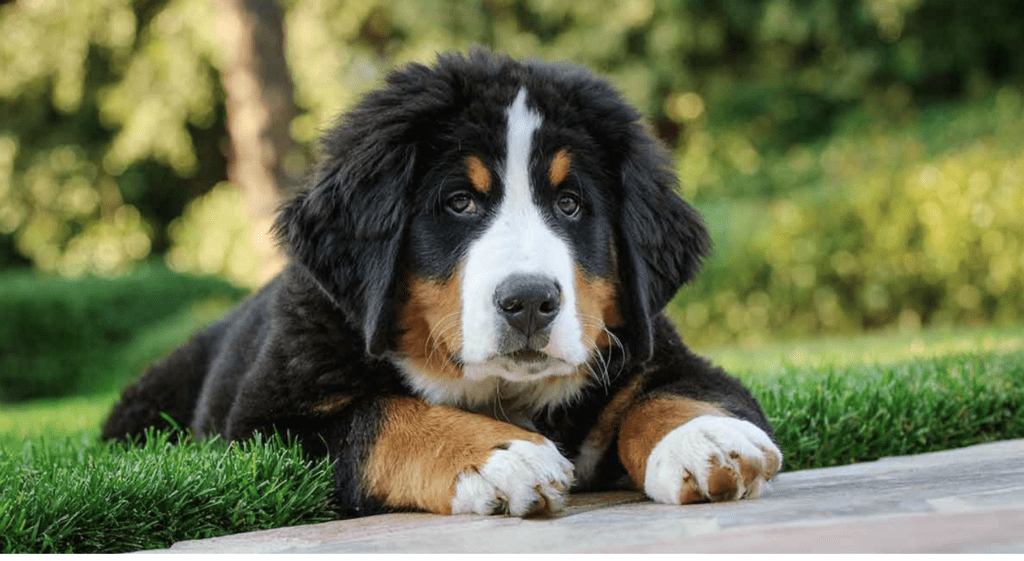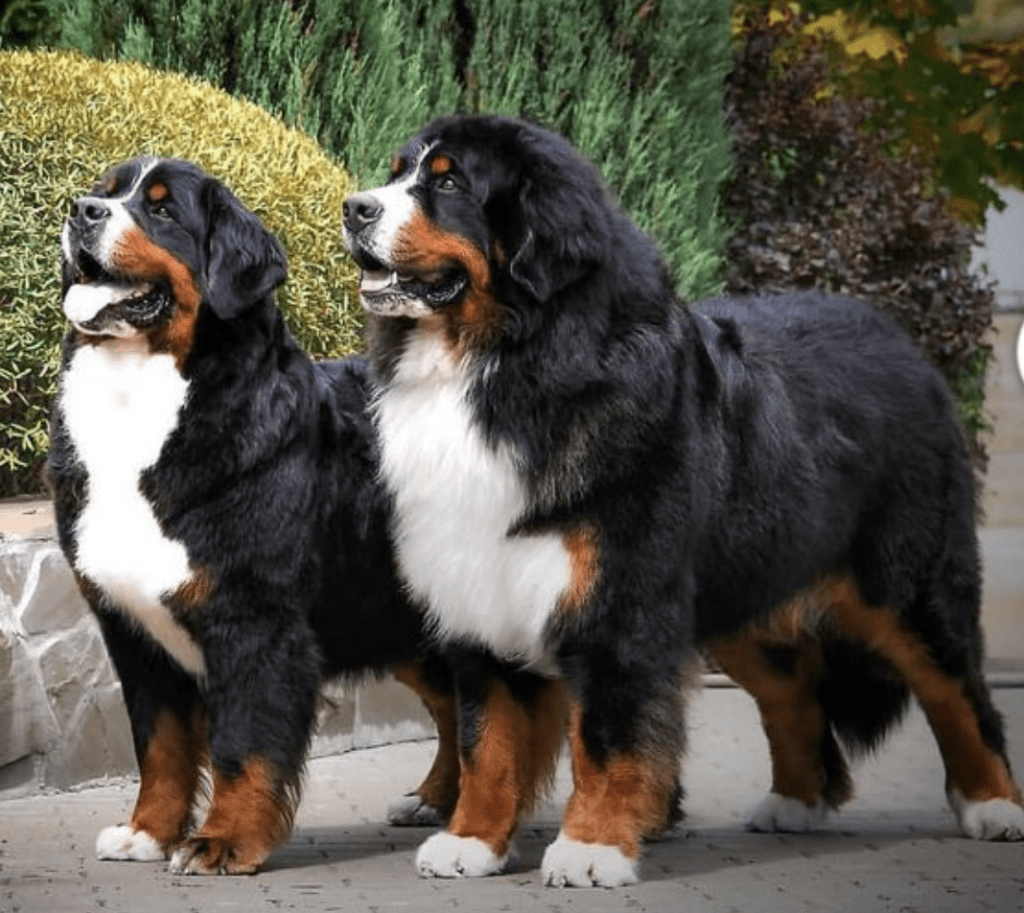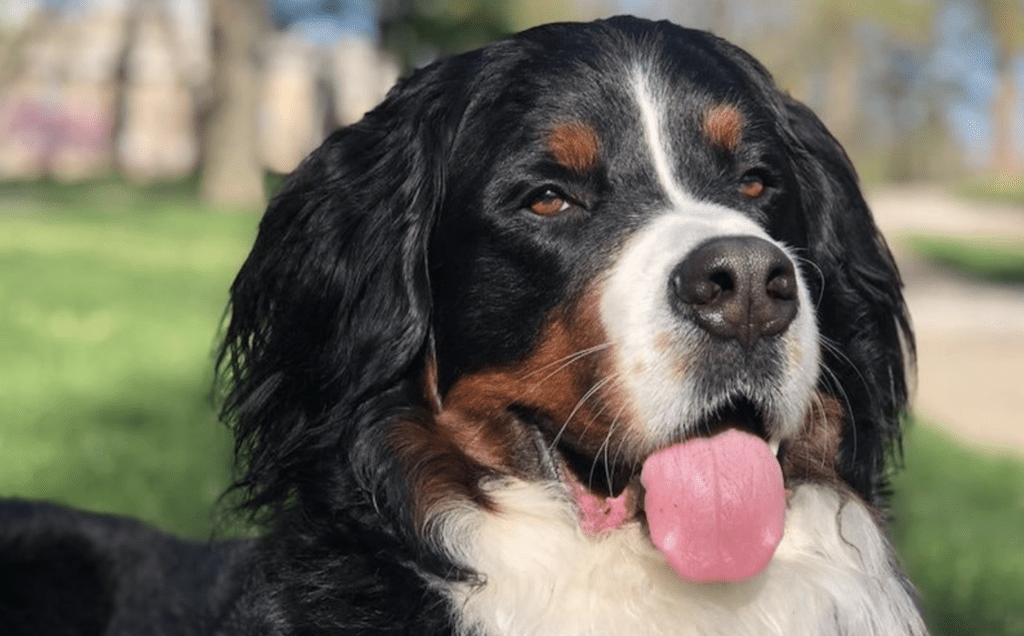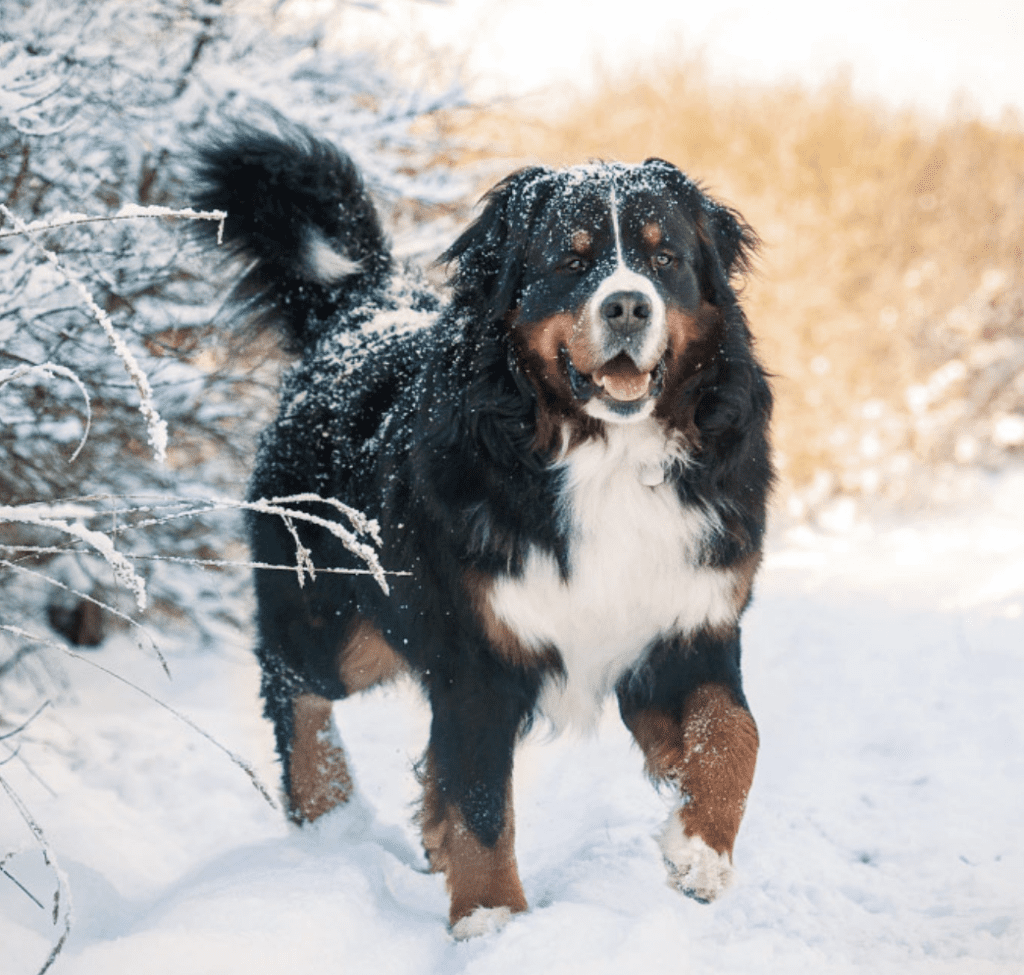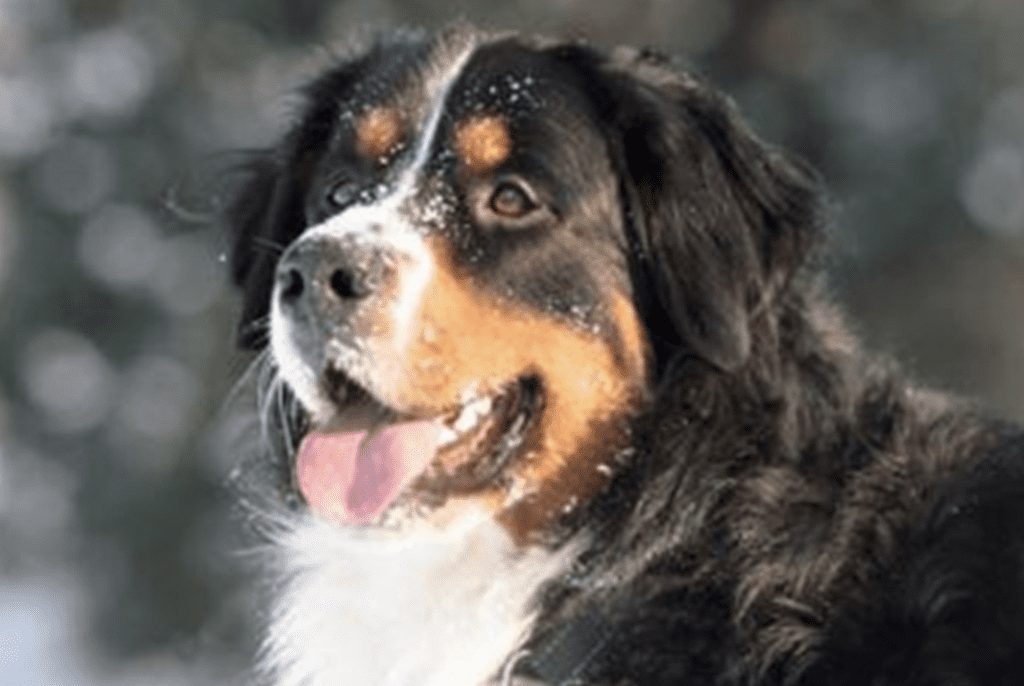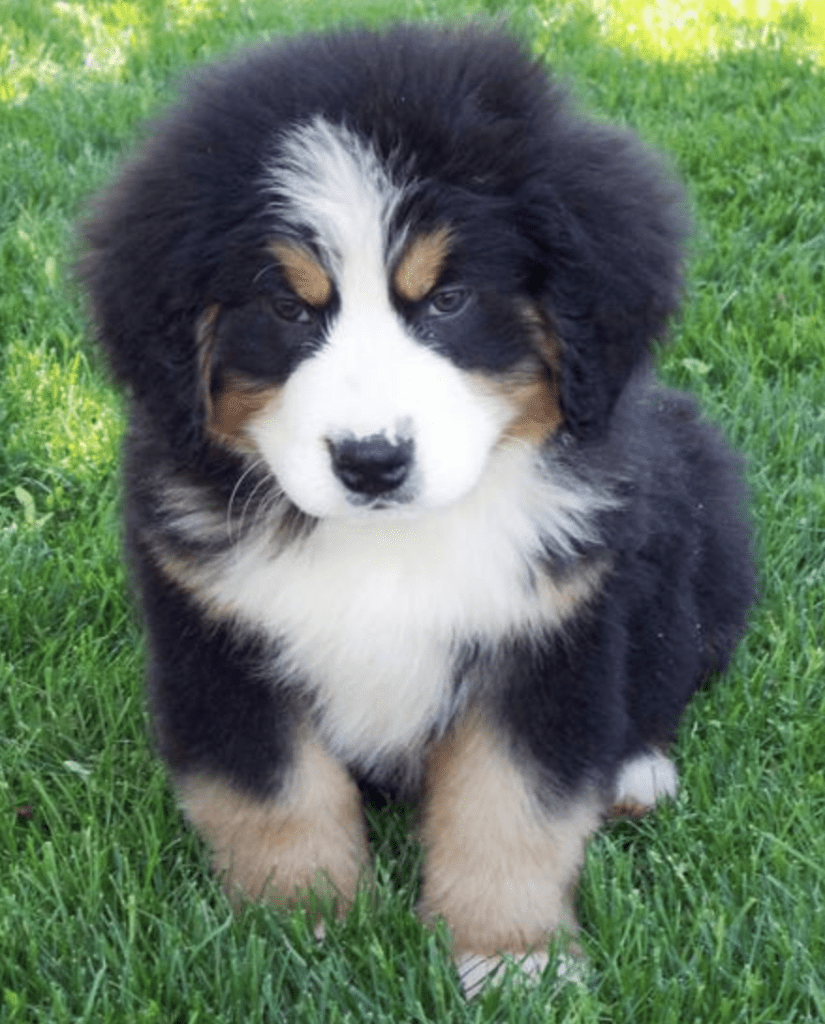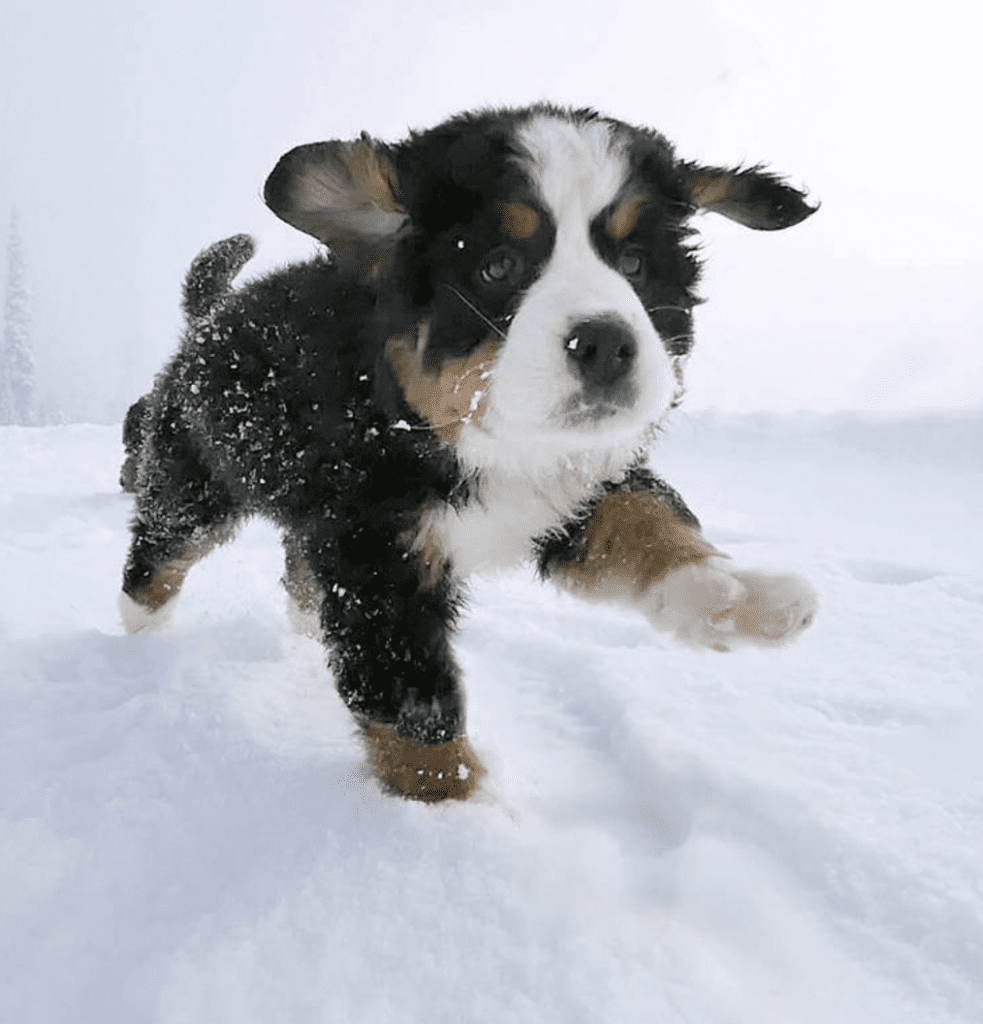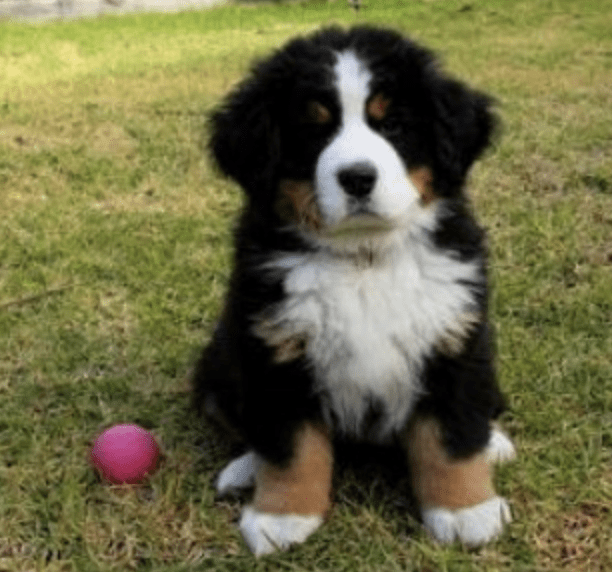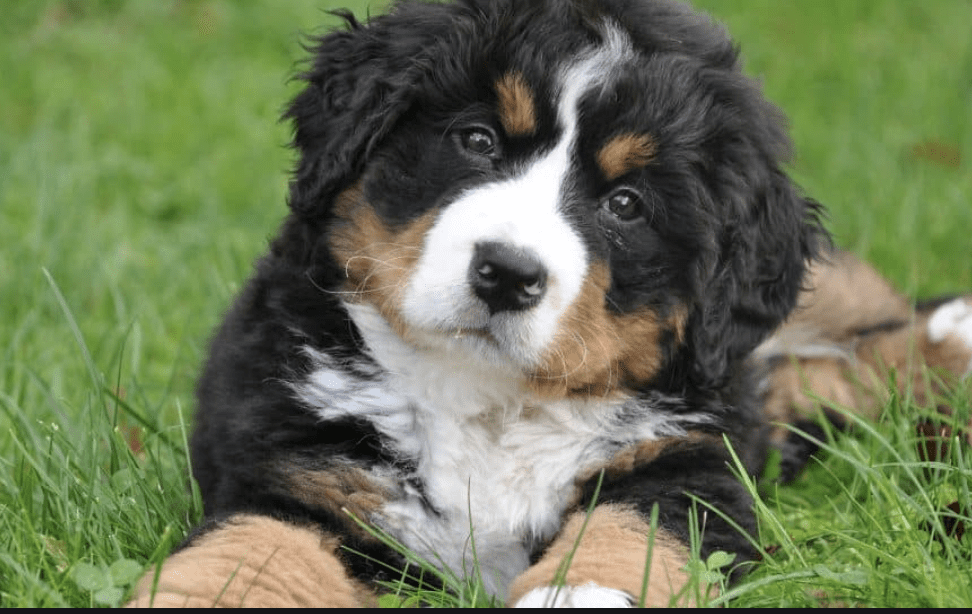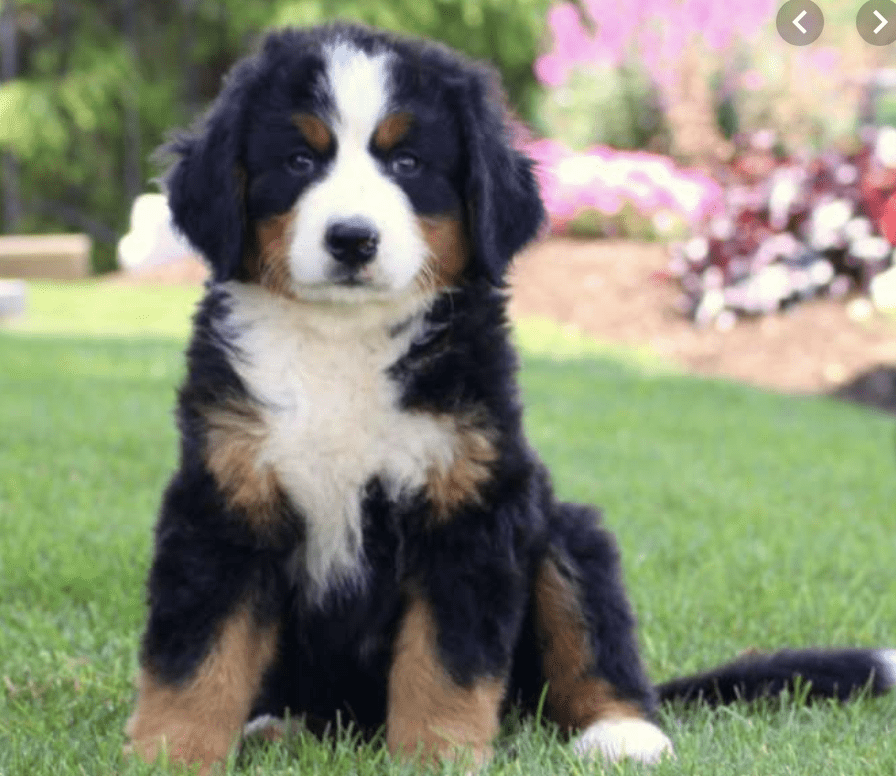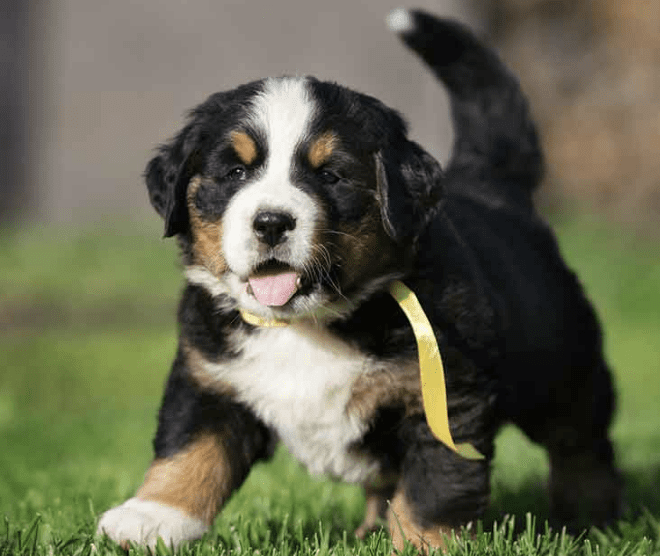Berners
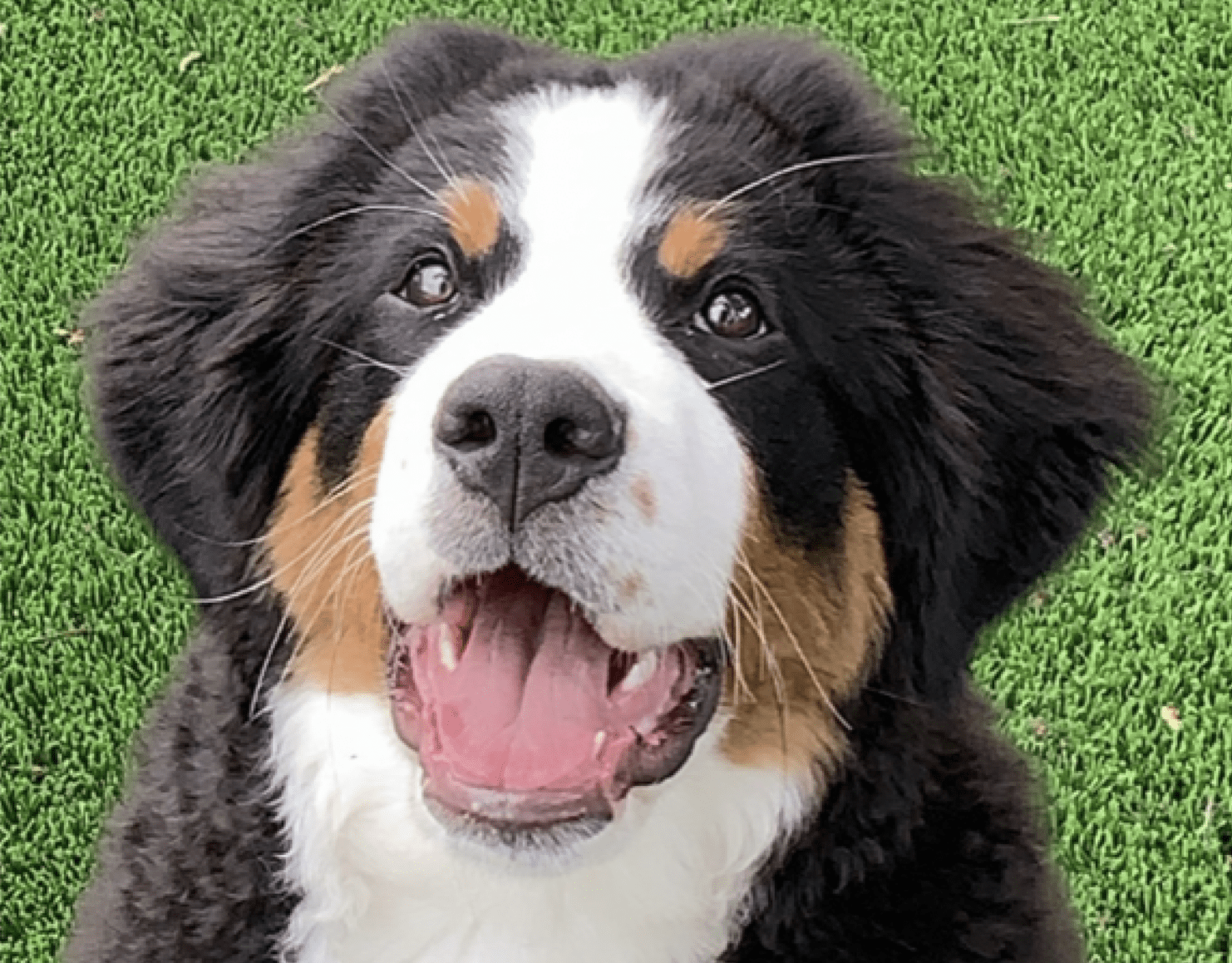
The more I learn about people, the more I like my dog.
Mark Twain
Bernese Mountain Dogs
The most well known of the Sennehunde, or Swiss mountain dogs, is the Bernese Mountain Dog and they are distinguished by a fairly long, silky coat. The origin of the breed is speculative at best. Some experts believe this breed’s history traces to the Roman invasion of Switzerland, when the Roman mastiffs were crossed with native flock-guarding dogs. Regardless of the exact mating pairing, the result was a strong dog that is able to withstand the Alpine weather and that could serve as draft dog, flock guard, drover, herder, and general farm dog.
Despite their utility, little attempt was made to perpetuate them as a breed purposefully. By the late 1800s, the breed was in danger of being lost. At that time, Professor Albert Heim initiated a study of Swiss dogs that led to the identification of the Bernese Mountain Dog as one of the existing types. These dogs were found only in the valleys of the lower Alps. Through Dr. Heim’s efforts, these dogs were promoted throughout Switzerland and even Europe. The finest specimens came to be found in the Durrbach area, at one time giving the breed the name Durrbachler. With the breed’s spread, the name was changed to Bernese Mountain Dog. The first Bernese came to America in 1926; official AKC recognition was granted in 1937.
Bernese Mountain Dogs were bred as drafting (or pulling) dogs — they’ve been known to pull up to ten times their body weight or roughly 1000 pounds; and one Bernese Mountain Dog pulled over 2000 pounds!
Bernese Mountain Dog Profile
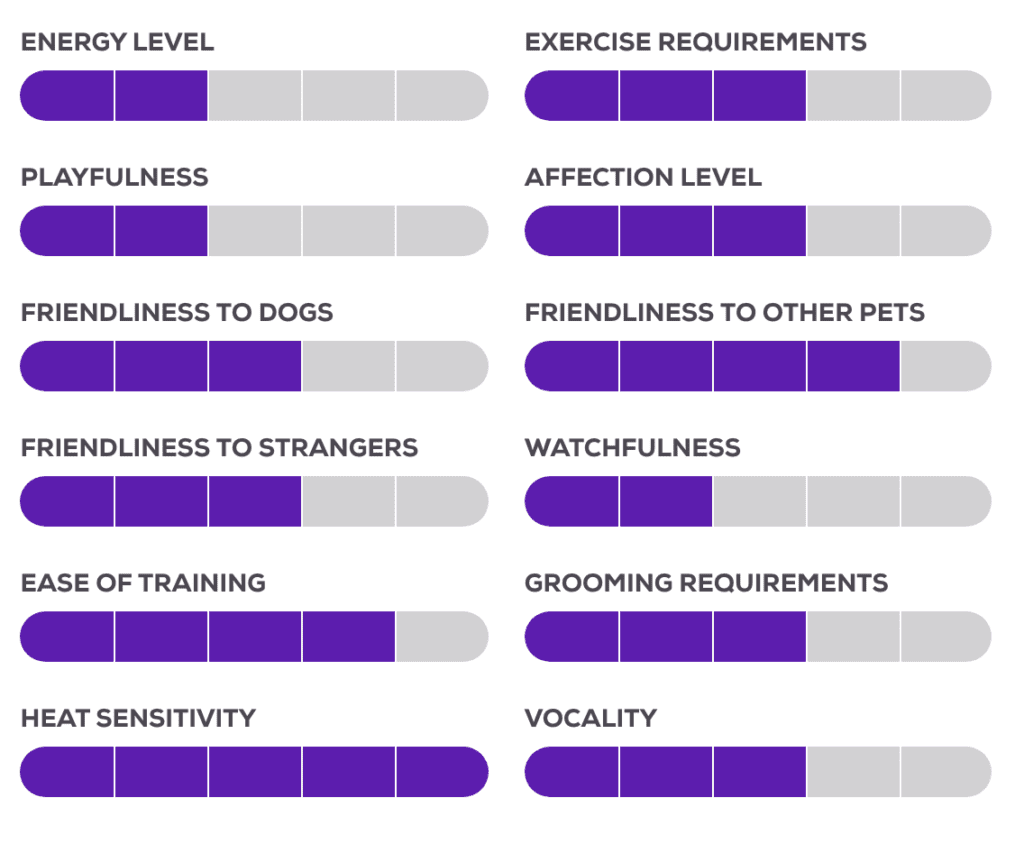
Berners, in General
- Origin: Switzerland
- Nickname: Berner
- Characteristics: Loyal, intelligent, some herding instincts, extremely agile given the large bone structure
- Need for Human Interaction: Extremely high; may exhibit undesirable behaviors if left alone for extended periods
- Social Skills: Puppies may “mouth” objects
- Exercise needs: Low to Moderate
- Lifespan: Approximately seven to nine years
- Need to vocalize: Low
- Grooming: Weekly brushings; baths as needed
- Hypoallergenic: No
- Weight: Male: 84–110 lbs (38–50 kg), Female: 79–110 lbs (36–48 kg)
- Temperament: Intelligent, Affectionate, Loyal, Faithful
- Height: Male: 25–28 inches (64–70 cm), Female: 23–26 inches (58–66 cm)
- Associations: The Bernese Mountain Dog Club of America.
Berner Health
- Major concerns: CHD, elbow dysplasia, mast cell tumor, gastric torsion
- Minor concerns: cataract, entropion, ectropion, SAS
- Occasionally seen: hypomyelination, allergies, vWD, hepatocerebellar degeneration, hypothyroidism, PRA
- Suggested tests: hip, elbow, eye, cardiac, DNA for vWD
- Life span: 6–9 years
- Note: Extra care must be taken to avoid heat stroke.
Berner Personality
The Berner is an affectionate, intelligent, and alert dog. They’re also gentle, calm, and tolerant. They like to be with family and thrive when included in family activities. Their large size is one of his most notable features, and of course early training is essential to teach them how to behave properly in the house and with people. Slow to mature, they reach adult size long before they reache mental maturity.
The Berner is protective of family, though aren’t usually aggressive. They can be aloof with strangers and generally a bit shy, so exposing the Berner puppy to a wide variety of people, animals, and situations is important.
Temperament is affected by a number of factors, including heredity, training, and socialization. Puppies with nice temperaments are curious and playful, willing to approach people and be held by them.
Like every dog, the Berner needs early socialization—exposure to many different people, sights, sounds, and experiences—when they’re young. Socialization helps ensure that your Berner puppy grows up to be a well-rounded dog.
Enrolling them in a puppy kindergarten class is a great start. Inviting visitors over regularly and taking your pup to busy parks, stores that allow dogs, and on leisurely strolls to meet neighbors will also help polish their social skills.
Are Berners Smart?
In obedience trials, Bernese Mountain Dogs scored high enough to be classed as a “bright dog,” beating out over 100 dog breeds. This meant that a Bernese Mountain dog was able to learn a new command with just 5 to 15 repetitions. The average dog needed 25 to 40 repetitions to learn a new command. The Berner is at least 5 times faster at learning than the average!
Furthermore, Berners showed that they were ultra-obedient dogs during the trials. Bernese Mountain Dogs were able to obey a known command on the first try with an 85% or better success rate! On the other hand, the average dog breed will obey a known command on the first attempt with at least a 50% success rate. Not too bad, but not nearly as great as the Bernese Mountain dog.
Another dimension of canine intelligence is adaptive intelligence, which refers to the ability of the dog to learn for itself. Is the dog able to solve problems and learn from previous experiences and mistakes? While all individual Bernese Mountain dogs have roughly the same instinctive intelligence, their adaptive intelligence can vary. However, most Berners tend to show tremendous adaptive intelligence as reported by owners.
Puppy Training Rules
Young puppies make eager pupils, so you can start training your dog as soon as you get them home. It’s a myth that pups need to be at least six months old before they can be properly trained – the younger they are, the easier it is to teach them. Think of them as little furry sponges, waiting to soak up all the learning you can give them.
Keep puppy training sessions short and sweet. Young puppies lose concentration easily, so it’s better to do six five-minute sessions each day than one half-hour session.
Only have training sessions when you’re in a good mood. Dogs are very receptive to human emotions, so they’ll be able to tell if you’re stressed or grumpy.
Always finish dog and puppy training sessions on a high with an exercise you know your dog can do easily so you end with success.
In the beginning train with no distractions. Get the basics down in a quiet setting, and add distractions later, so your dog gets used to a variety of environments.
Training must always be reward-based, so use lots of toys, treats and cuddles. Negative or punishing techniques are cruel and don’t work, and never use a choke chain as you can injure your dog’s neck very easily.
Once your dog has got the hang of an exercise, swap food-based treats for toys, or subtract treats from their daily food allowance, to avoid weight gain.
Berner Fun Facts
Berners Are From Switzerland
Since the breed is so old, the details about its creation are a little slim. Some believe they came about when Romans brought mastiff-like dogs to Switzerland 2000 years ago. Others contest this theory, as the remains of large dogs have been found in Switzerland dating before the Romans crossed the Alps.
The Berner Name
Bernese mountain dogs get their name from the area where they were bred: Bern Canton, the central region of Switzerland.
Berners Are a Type Of Swiss Mountain Dog
Swiss mountain dogs, or Sennenhund, are large working dogs that originated in the Swiss Alps. They’re known for their stocky figure, calm temperament, and tri-color coat. Besides the Berner, the others are the Appenzeller, Entlebucher mountain dog, and Greater Swiss mountain dog. While they all look similar, only the Bernese mountain dog has the signature long flowing fur.
Berners Bred to be a Working Dog
Berners are a powerful breed that was developed to have strong legs to endure the rocky terrain of the mountains. Originally they were used as herding and guard dogs for farm families. Their friendly and calm personality makes them great companions as well.
Berners Became Delivery Dogs
In 1850, cheese plants started to open up, and producers wanted to move large shipments of food. The strong dogs would pull carts filled with dairy products and bread to different farms. Sometimes small children would accompany the dogs, but Berners were perfectly capable of doing it on their own. The trend of draft dogs caught on, and soon countries like Belgium, France, the Netherlands, and even Canada were using the dog-carts. While the canine-drawn carts were a necessity in the Alps, in other parts of the world they were used as a novelty.
Berners Are Powerful
These dogs are well muscled and eager to please. They can haul up to 1000 pounds—10 times their own weight.
St. Bernards Almost Wiped Out the Berner
In the late 1800s, the St. Bernard was the ‘It’ dog of Switzerland. As popularity for the big dog rose. Fanciers loved the St. Bernard’s uniform coloration and distinct origin. The Swiss Kennel Club started in 1883 and chose not to recognize any of the mountain dogs, opting to showcase instead the St. Bernard and other hounds of the region. Soon, only farmers in remote areas had use for the Bernese mountain dog and others of its kind. The breed would have been wiped out entirely if not for an innkeeper named Franz Schertenleib, who as a child had heard stories about the dog. He popularized the breed by promoting it across Switzerland and Europe.
Carting Became a Sport
While there is no longer a need for cart-pulling canines, that doesn’t mean the dogs have lost for their love for it. Berner owners recognize that the dogs were bred to pull carts and come to life when they do it. The Bernese Mountain Dog Club of America holds a carting competition so Berners can show off their stuff.
Berners Are Puppies
If you’ve ever wanted your dog to never grow up, the Bernese might be perfect for you. This large breed matures more slowly than others and tends to exhibit puppy behavior later than most. A Bernese Mountain Dog puppy is beyond adorable with a huggable thick coat and high energy level, but it can tire you out. Heavy to moderate exercise, obedience training, and lots of play time will help.
Berners Love to Smile
The Bernese Mountain dog smile is legendary, transformative, and brought to you by angels. This family companion is happiest by your side.
Berners Have Double Coats
Bernese mountain dogs have silky, distinctively-colored coats that set these dogs apart from other dog breeds. Berners have a double coat that consists of two layers, double coated dogs have a dense undercoat of short hairs (woolly in texture) under a top coat of longer hairs called guard hairs. When a dog appears to be fluffier, it means he has a denser undercoat. This means you’ll be up in for the long haul when it comes to grooming.
Berner Heroes
In 2015, Nico, an adopted Bernese mountain dog, became a hero when he saved two people who were being swept out into the ocean by a California rip current. a vigilant Bernese named Nico was frolicking on the beach with his owner when he heard the cries of two swimmers being pulled by the Ventura Beach’s well known rip current.
Bella saved owner Chris Larocque from a burning house by pulling him out. Bella’s owner was home alone checking on his lunch in the oven. An ankle injury he’d sustained from an auto accident flared up and he fell and hit his head. On the way down, the cloth he had in his hand grazed the elements on the oven and caught fire, quickly moving up his arm and onto his clothing. Larocque removed the shirt and threw it against the wall, and the walls of the kitchen caught fire. Unable to rise on his own due to his injuries, he called for Bella and was able to grab her collar and coach her to pull him from the burning house.
In 2014, Oakley, saved her family, by sitting on her owner’s head until he woke up, when their Vermont ski condo caught fire overnight. Oakley the Berner woke up her owners, Bill and Stephanie Freeman of Chelmsford, as smoke filled their Sugarbush Resort condo.
During the October 2017 Northern California wildfires the Weaver’s had awakened with their home enveloped in flames. They had seconds to leave. To get to safety, she said, the couple had to drive through walls of flames and across a burning wooden bridge. Izzy the Berner survived the destruction of her family’s home and emerged from the forest, tail wagging, as her loved ones frantically searched for her. Izzy is a two-time cancer survivor.
Sasha was a Bernese Mountain Dog that followed a goat off of a cliff and managed to survive the fall as well as three days on an ice shelf waiting for rescue.
Ohly was a Bernese Mountain Dog who achieved notoriety in Canada after disappearing and then being found on Mount Seymour in a dangerous area known as “Suicide Gulley.” Members of North Shore Rescue, a local mountain rescue team, tracked, located and rescued Ohly.
Berner FAQS
Why Do Bernese Mountain Dogs Put Their Paws on You?
Bernese Mountain Dogs are an affectionate breed and they express their love for you through physical contact. Berners like to sit on your feet, place their paws on your chest, give hugs, and rest their head on you whenever the opportunity arises. Physical contact is an important part of bonding for Berners.
When Do Bernese Mountain Dogs Stop Growing?
The Bernese Mountain Dog is a slow-growing breed that doesn’t reach its full size—or mental maturity—for three years. There is a Swiss saying that applies to Bernese Mountain Dogs: “Three years a puppy, three years a good dog, three years an old dog.” The breed reaches full size before growing out of puppyhood, so he may be rambunctious even at a few years of age. Polite behavior and gentle play are important skills to teach a growing Berner.
How Much Can Bernese Mountain Dogs Pull?
Historically, Berners were used as cart dogs, so they’ve got impressive pulling power. Bernese Mountain Dogs can pull up to 1,000 pounds. Berners love to compete in the sport of carting or drafting. To prevent injury, Bernese Mountain Dogs must be fully grown—around two years old—before pulling any weight.
Berner Resources

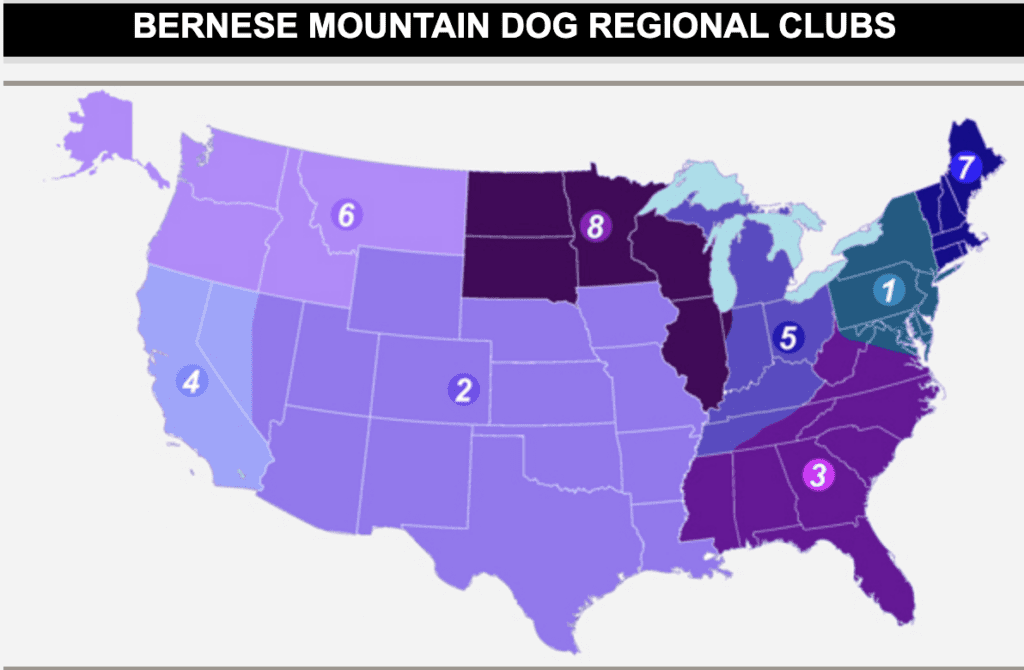
Berner Puppies
Bernese Puppy Dog Resources
Learn How to Train and Understand your Bernese Mountain Dog Puppy & Dog
The BMDCA Online Breeder Referral is an opt-in member privilege created to assist potential puppy owners with making contact with BMDCA members who breed.
The best place to start (in the U.S.) is the Bernese Mountain Dog Club of America (BMDCA) at www.bmdca.org
Sunshine Bernese Mountain Dogs has been breeding Berners since 1992. Sunshine has bred over 50 champions, won at multiple specialties, and won a Best in Show with our homebred boy Dakota along with multiple group placements with our Bernese, and many awards of Merit at National Specialties. Their dogs have been top producers of champions and working dogs throughout the country for many years. They have imported new lines from Canada, Belgium, Norway, and Sweden to improve the health of our dogs.
Bernese Puppy Dog Club of Oregon https://www.bmdco.org/resources.html
If you’re looking for a list of Bernese Mountain Dog clubs around the world, there’s a great list at BMDINFO.org.
Check out the BMD clubs worldwide list
Rescues: Bernese Mountain Dog Rescue
You can also go to AKC.org and use their puppy finder service
How to train your Berner (an online resource) TheOnlineDogTrainer
More Fun Posts About Berners
Bernese Mountain Dog Videos >>
How Berners Cope With Shelter In Place >>

